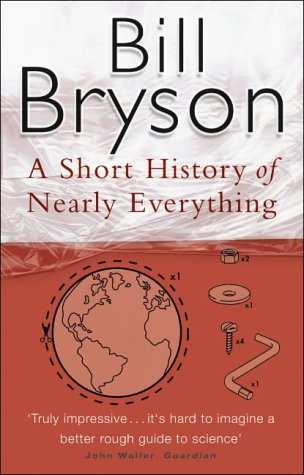Mark Hurst who runs the website GoodExperience.com has added some valuable and useful tips on how to increase your knowledge and management of customer user experience.
SETI project finds distance mysterious signal
New Scientist reports that a new mysterious signal has been identified, that is the most likely candidate for contact by intelligent alien life so far.
The signal detected by astronomers at SETI (Search for ExtraTerrestrial Intelligence) has been identified 3 times but, could possibly be signals from an unknown astronomical phenomenon.
Useful tips on RSS Usability
There are some useful usability tips when considering RSS in a blog post at helge.at.
Some of the considerations include disguised links, too few textual information, too many articles per day and nested feeds.
Crypto conference reveals MD5 flaw
An interesting article in MIT Technology Review which comments on how researchers in France, Israel and China have found flaws in the MD5 encryption.
An algorithm and encryption that up to now has been thought to be impossible to break into, and is most widely used in security algorithms today.
The NextD Design Journal
An interesting journal titled, The NextD Design Journal looks at a variety of topics and areas, including human-centered design, navigation, innovation, interaction and research.
Visual perception papers from Freigurg University
Some of the interesting medical papers and research of human visual perception currently being undertaken at the Dept. of Ophthalmology at the Medical school of the University of Freiburg, Germany.
The projects and papers look at Human perception such as visual dimensions, luminance and colour, visual acuities including the Bach, Meigen, Strasburger paper on CRT and Vision Research.
Computer virus Rbot-GR uses webcams
A new computer virus called, Rbot-GR uses webcams to literally spy and snoop at victims. It appears to be capable of turning on webcams and sending images and video via the internet.
The IBM History Flow research project
I’ve been reading up on a variety of projects whilst here in the UK. One I found particularly interesting is the IBM History Flow research project.
The project is part of the collaborative user experience research group here and aims to visualise the relation of document change. It is currently aiming to visualise changes of documents, by analysing the wiki site, Wikipedia. Some of the results are quite interesting.
A similar project is that of the Latex Wiki which also indexes and visualises relationships of document changes.
Audio recordings of the Lessig book Free Culture
The Laurence Lessig new book Free Culture has now been translated into Audio Chapter recordings in various languages by individuals wishing to allow others access to it.
An interview with John Perry Barlow
Brian Doherty from Reason speaks with John Perry Barlow regarding the legalities of intellectual property, intellectual products and the development of culture.
There is a summary from the interview via Tim Wu, guest blogger on the Laurence Lessig site.
Popular colour combinations with Colorcell
An experimental website and project, Colorcell, which aims to find the most popular color combinations.
Online tool for creating bookmark icons
A great and useful online tool that creates a browser favourite (bookmark) icon from an imported JPG of GIF. These icons are those 8×8 pixel images that appear next to a bookmarked item and a tabbed window in a browser.
aDesigner – a Java tool for Accessibility
IBM have developed a JAVA tool called aDesigner for web designers that lets you ensure that pages pages are accessbile and usable to the visually impaired.
A review of the tool can be found in InternetNews
Global Information Architecture
Lou Rosenfeld has posted a really interesting blog post on some of his experience regarding Enterprise IA and certain differences in the way culture, language and business models affect the use and access of information.
Reading: Bill Bryson – A Short History of Nearly Everything
I managed to last week buy a copy of Bill Bryson’s, A Short History of Nearly Everything, whilst on my way to Zurich, Switzerland.

It’s one of those books that is hard to put down. This, his latest book is a walkthrough of science covering the subjects of geology, chemisty, paleontology, astronomy and physics from the curious mind of Bryson.
The book is more a way to possibly understand, appreciate, marvel and enjoy the wonder and accomplishment of science and to render it comprehensible to people, like Bryson, made bored (or scared) stiff of science at high school.
His interest is not simply to discover what we know, but to find out how we know it – It is a great read.